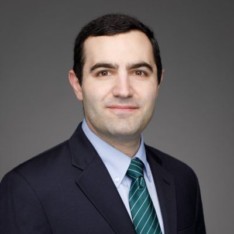Government’s Credibility Crisis

The latest unemployment data paint a bleak picture of a second Great Depression, with around 1 in 5 people in the country’s two largest cities, New York and Los Angeles, out of work, even as New York’s tone-deaf Governor Andrew Cuomo releases creepy, self-congratulatory new propaganda.
Americans have painfully endured socially and economically crippling lockdowns, loudly pushed by a politicized, partisan epidemiology profession, only to watch the same epidemiologists inexplicably and hypocritically turn around and argue that “the public health risks of not protesting . . . greatly exceed the harms of the virus.” (It should be noted here that the author emphatically agrees with protests against a system of widespread police abuse, overcriminalization, and mass incarceration).
As writer Thomas Chatterton Williams, himself a proponent of the lockdowns, notes, the overnight shift in “the enlightened position” “[felt] like gaslighting.” Williams correctly observes that this “whiplash-inducing” change is just the kind of science politicization for which the supposedly science-loving political left is constantly criticizing the right.
Further, this turnabout would seem to be strong prima facie evidence that endorsement of the lockdowns was all along political in character, that it was never really about the science, or saving lives, or flattening the curve, etc.
We now know, in any case, that the alarmist, psychologically manipulative rhetorical tactics of the ruling class were brimful with nonsense and pseudoscience. The infection fatality rate (IFR) of COVID-19, it turns out, is “much lower than original speculations made in the early days of the pandemic.”
Surveying seroprevalence studies with a sample size of 500 or more, available as of July 11th, John Ioannidis found that “[a]cross 32 different locations, the median infection fatality rate was 0.27% (corrected 0.24%).” His analysis finds that, for individuals under 70 years old, the corrected median IFR is 0.04%.
How did we get here? How did we allow a small group of politicians to impose this social and economic calamity on us? To be clear, this is not really about politics—at least it shouldn’t be. The problem is meta-political in the sense that, whatever one’s political leanings or normative preferences, a political system that reflects the genuine will of the people is simply not possible in an environment of complete unquestioning deference to the tiny fraction of people who actually govern us.
We must return to fundamental questions about the nature of this political system and why we simply accept that these people have a right to rule.
When the pandemic arose, our rulers could conceive of no solution that was not authoritarian, that was not simply a naked appeal to power—power disguised, of course, as sober scientific expertise. The truth, perhaps less bewitching to the power-obsessed, is that any genuinely scientific approach—that is, one more robust and thoughtful than the mere scientism of, for example, Anthony Fauci—would require a more modest approach, the admission of a level of ignorance.
This kind of admission is, to the power elite, anathema; it amounts to a public renunciation of faith by acknowledging that the modern state is neither omniscient nor omnipotent, that the people at Leviathan’s helm are not especially attuned to some arcane knowledge.
Interestingly, if they were, they wouldn’t need the very tool that uniquely characterizes the state: force, violence, aggression, invasion. Nothing is less imaginative than raw power, which is antisocial just by definition; it can compel obedience and so lacks any reason to develop creative, dignity-respecting solutions to social problems.
There is an important sense in which authoritarian thinking such as we have seen is inevitable, the promised result of a culture that only teaches, values, and considers “solutions” that exalt the powerful and the coercive tools they hold. Today’s “liberals” should heed Herbert Spencer’s reminder of “what Liberalism was in the past, that they may perceive its unlikeness to the so-called Liberalism of the present.” The former, the genuine article, “stood for individual freedom versus State-coercion,” for widening “the area within which each citizen may act unchecked.” The latter stands for compulsion, coercion, for “dictating the actions of citizens.”
The readiness with which Americans accepted one of the most distilled forms of authoritarianism in a lifetime should shake us from our slumber, prompting an energetic return to Spencer’s liberalism, the humbler liberalism of granting a presumption in favor of individual people and their dignity.










